What's Your Glacier IQ?
As an avid readers of this journal and/or participant in our Polar Connect event, I'm sure that you are just waiting for an opportunity to test your glacial knowledge. Could you call yourself a glaciologist? Give yourself one point for each correct answer. Answers below.
- Why are glaciers slippery on the bottom?
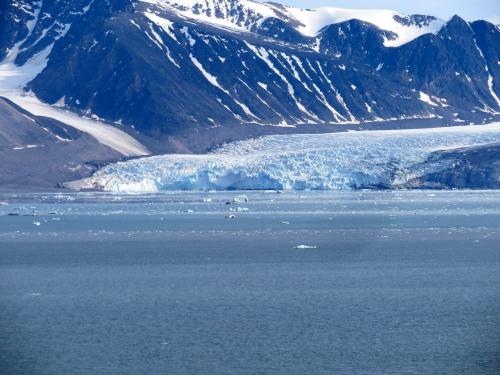 Why are glaciers slippery on the bottom?
Why are glaciers slippery on the bottom?
What type of glacier is this? It ends in a body of water.
a. valley glacier
b. tidewater glacier
c. mountain glacier
d. piedmont glacier
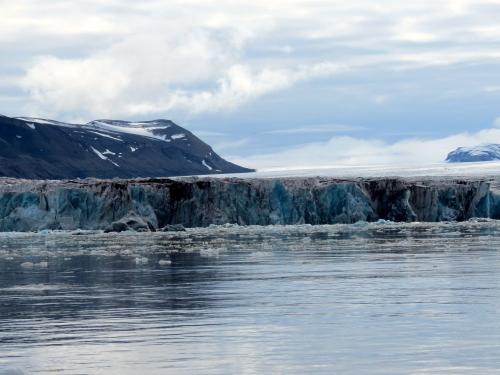 What type of glacier is this?
What type of glacier is this?
Glaciers act like giant bulldozers, pushing rock and debris to the sides and front of them. These can be left as as mounds after the glacier retreats or melts. What are they called?
a. eskers
b. glacial mounds
c. moraines
d. cirques
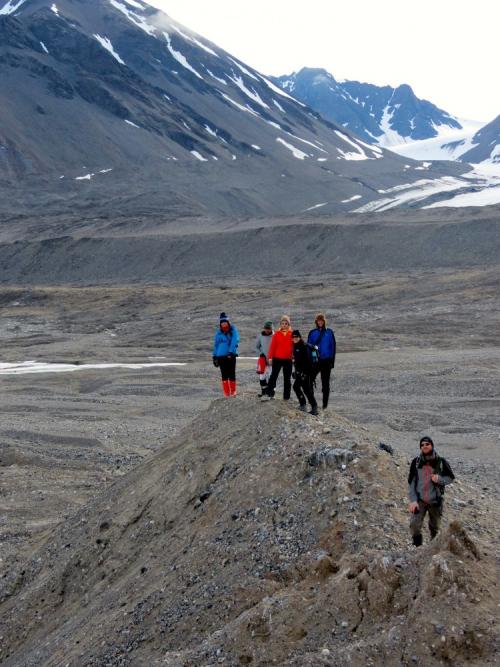 The REU students on a hike below the glacier. What are the mounds called?
The REU students on a hike below the glacier. What are the mounds called?
- Glaciers have plumbing systems. Why does water that exits from under a marine terminating glacier float to the top?
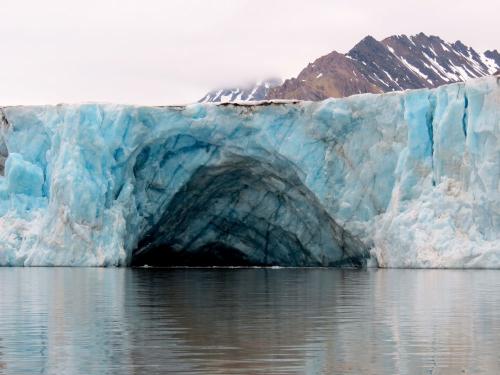 Why does water from under the glacier float to the top?
Why does water from under the glacier float to the top?
- What is it called when large blocks of ice break off of the end of a glacier?
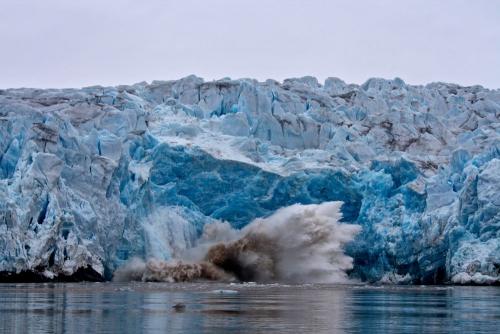 What do you call it when large chunks of ice break off of the front?
What do you call it when large chunks of ice break off of the front?
What is glacial sediment called?
a. till
b. glaciment
c. sandy loam
d. until
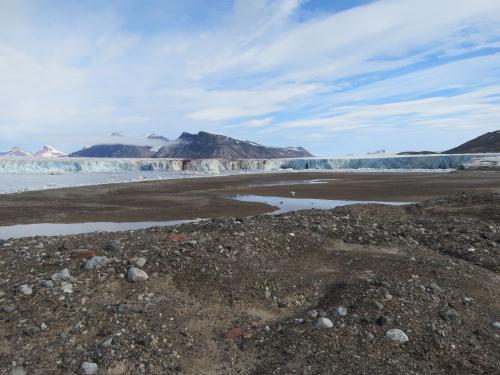 What is glacial sediment called?
What is glacial sediment called?
- What is the original ingredient of a glacier?
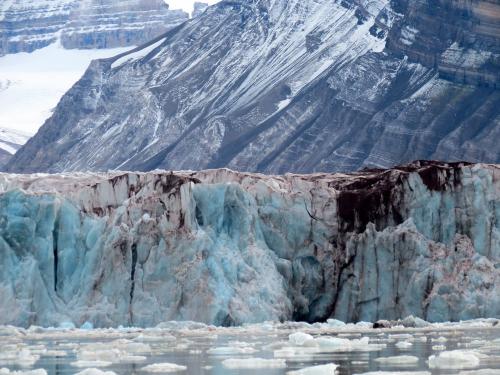 What is the original ingredient in glaciers?
What is the original ingredient in glaciers?
- What determines if a glacier grows, retreats or stays the same?
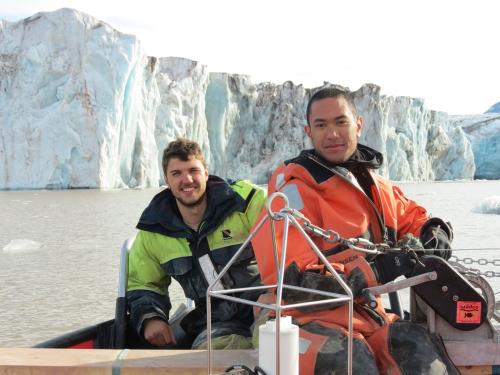 What determines if a glacier grows, retreats or stays the same? Steve and Ryan taking a break.
What determines if a glacier grows, retreats or stays the same? Steve and Ryan taking a break.
What do you call that portion of the Earth's surface covered by water in the solid form?
a. iceosphere
b. thermosphere
c. cryosphere
d. ionosphere
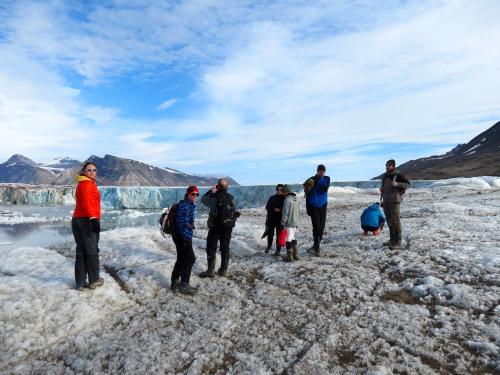 REU students hiking above a glacier. What do you call the part of Earth covered by ice?
REU students hiking above a glacier. What do you call the part of Earth covered by ice?
About what percent of the Earth is currently glaciated?
a. 10
b. 3
c. 25
d. 15
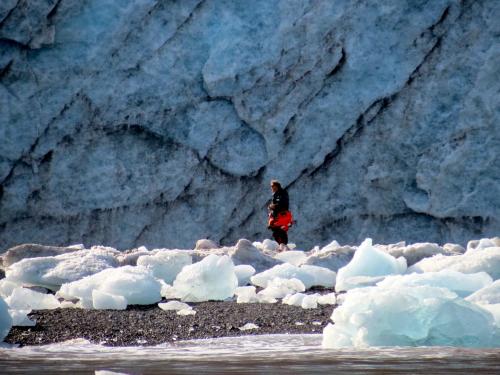 About what percent of Earth is currently glaciated? Ross checking out Keanland.
About what percent of Earth is currently glaciated? Ross checking out Keanland.
Answers
Meltwater under the glacier acts as a lubricant. This type of motion is called basal sliding.
This is "our" glacier, Kronebreen and it is an example of a tidewater glacier.
Moraines are accumulations of dirt and rocks that have been pushed along by the glacier as it moves.
Glacial meltwater is fresh water that is added to marine saltwater. Fresh water is less dense than saltwater, making it more buoyant. It floats to the top. Good thinking if you got that right!
Calving, of course!
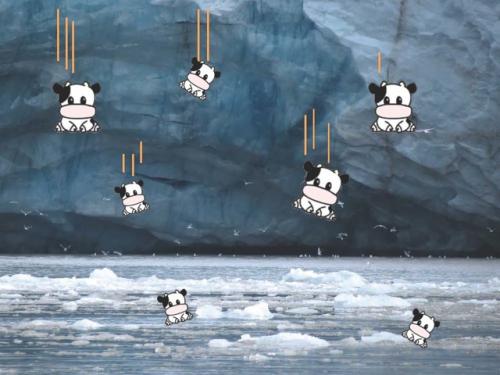 It's called calving! Photo embellishments by Sarah Bartholow
It's called calving! Photo embellishments by Sarah Bartholow
It is called till. Till makes up the bulk of the sediment in the bottom of the fjord. In other words, all of that mud.
Glaciers are made from snow that doesn't melt each year and instead accumulates. Compression forces the snow to re-crystallize and increase in density, turning it into an intermediate state called firn. With further compression and time, larger ice crystals form.
The determining factor is the difference in how much snow is added versus how much the glacier melts and/or sublimates. It will grow if it is getting more snow, retreat if it melts/sublimates more and stay the same if the two are equal. This is called the glacier's mass balance.
It is called the cryosphere, but don't let it make you sad.
About ten percent!
How did you do? Scoring below for number correct
1-4 You're as cold as ice.
5-7 Getting warmer. Keep learning and you'll be advancing like a glacier!
8-10 Wow! You know your cryosphere. Good job, glaciologist!


Comments